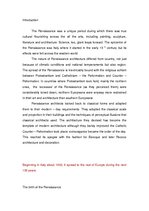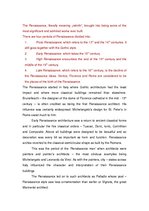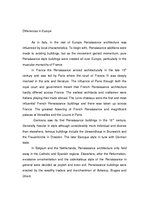-
Renaissance
Introduction
The Renaissance was a unique period during which there was true cultural flourishing across the all the arts, including painting, sculpture, literature and architecture. Science, too, giant leaps forward. The epicentre of the Renaissance was Italy where it started in the early 15 th century but its effects were felt across the western world.
The nature of Renaissance architecture differed from country, not just because of climatic conditions and national temperaments but also region. The spread of the Renaissance is inextricably bound with the religious schism between Protestantism and Catholicism – the Reformation and Counter – Reformation. In countries where Protestantism took hold, mainly the northern ones, the ‘excesses’ of the Renaissance (as they perceived them) were considerably toned down; northern Europeans were anyway more restrained in their art and architecture than southern Europeans.
Renaissance architects looked back to classical forms and adapted them to their modern – day requirements. They adopted the classical scale and proportion in their buildings and the techniques of perceptual illusions that classical architects used. The architecture they devised has become the template of modern architecture although they barley improved the Catholic Counter – Reformation took place: extravagance became the order of the day. This reached its apogee with the fashion for Baroque and later Rococo architecture and decoration.
Beginning in Italy about 1400, it spread to the rest of Europe during the next 150 years.
The birth of the Renaissance
The Renaissance, literally meaning „rebirth”, brought into being some of the most significant and admired works ever built.
…
arhitekturas renesanses laikā gan eropā gan pasaulē(angļu valodā)




